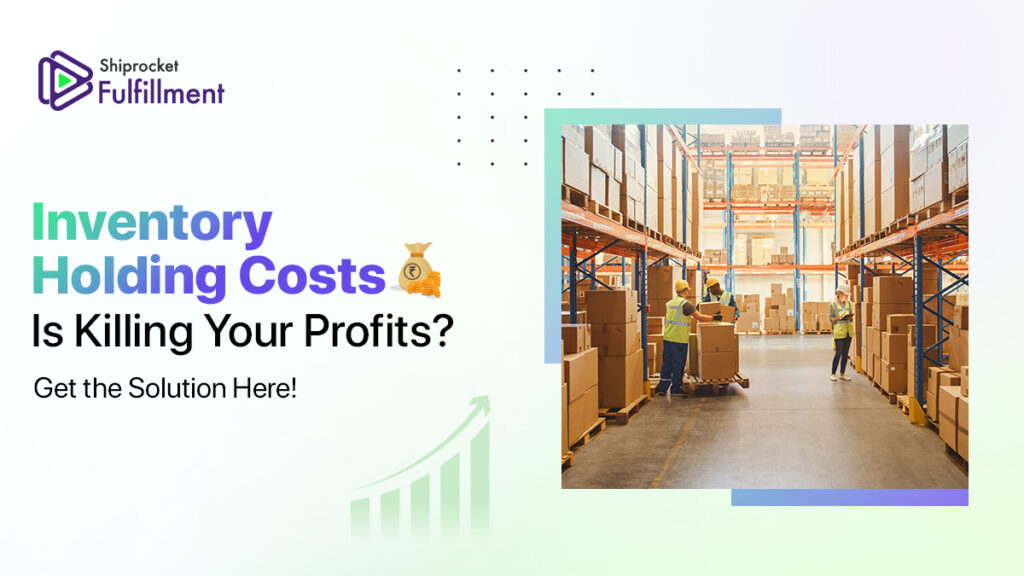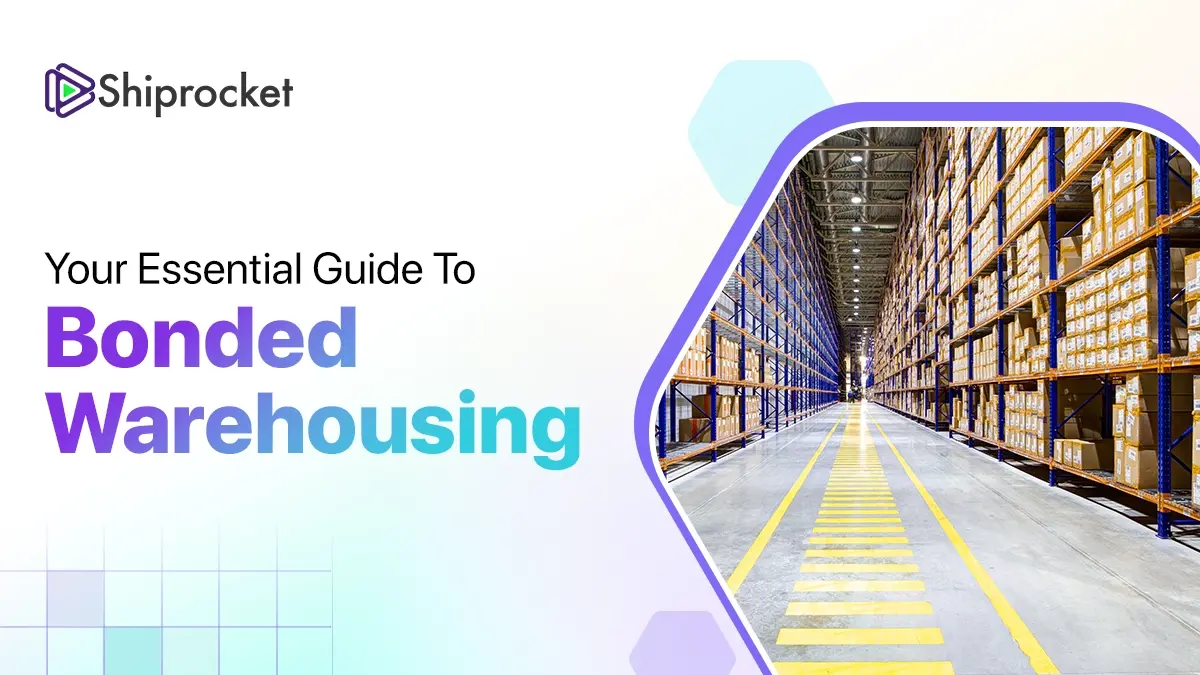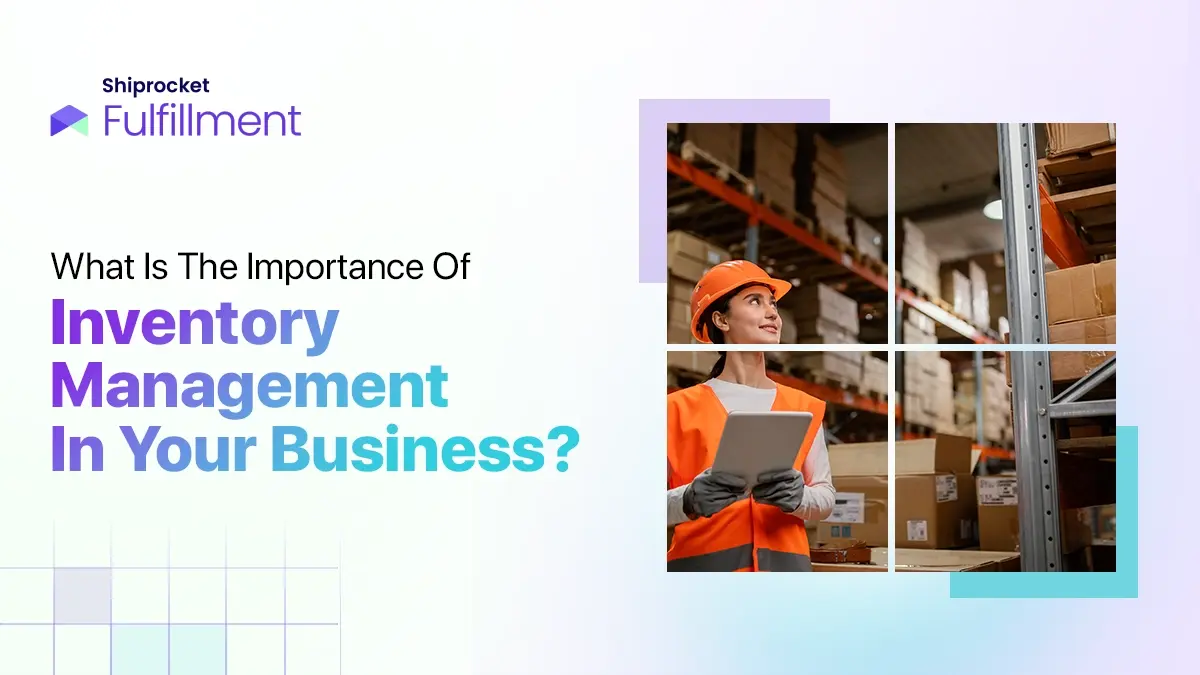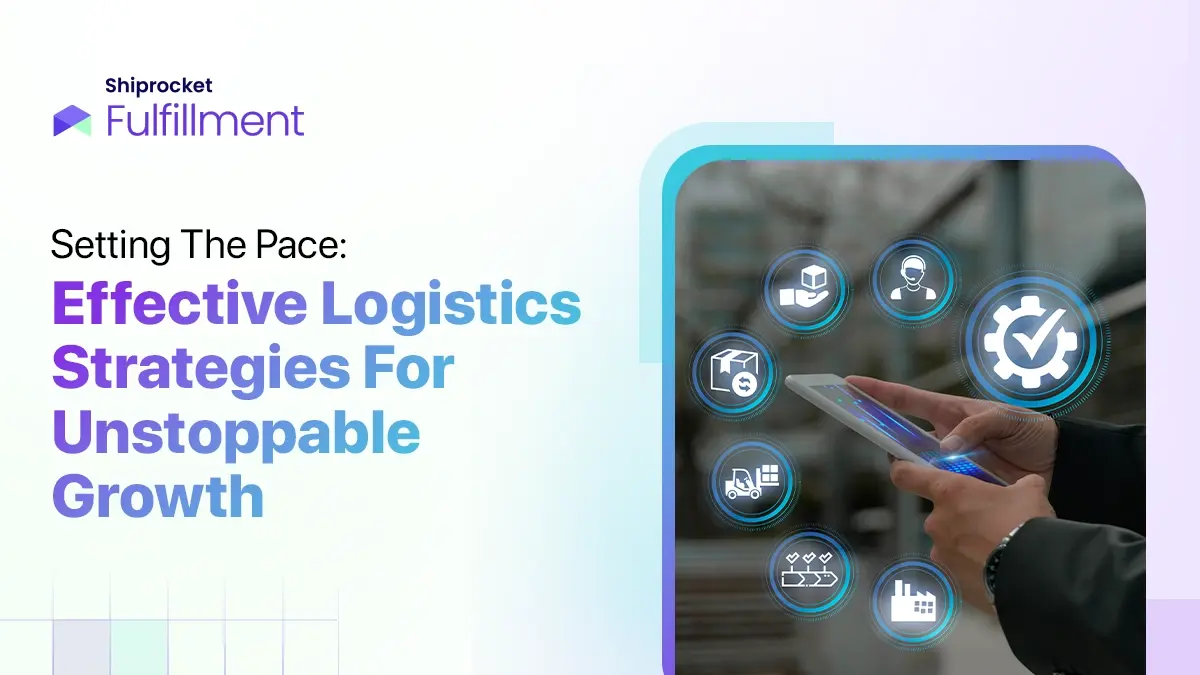Introduction
Today’s business landscape is extremely fast-paced and highly competitive. Effective inventory management has become a crucial factor in determining the success and profitability of any business. There are several elements to inventory management, with understanding and optimising inventory holding costs being prominent.

Let’s explore inventory holding costs in detail.
Understanding Inventory Holding Costs
All businesses store a fixed amount of inventory. The expenses a business incurs on storing and maintaining inventory are referred to as inventory holding costs. These costs directly impact the profitability and financial condition of your business.
There are several important components of inventory holding costs, including the following:
- The opportunity cost of capital
- Storage and warehousing expenses
- Costs related to inventory obsolescence and damage
- Handling and labour costs
- Risk of theft or loss of inventory
- Carrying cost of inventory due to deterioration and depreciation
You must maintain an optimum inventory level to manage inventory holding costs effectively. An optimum inventory level means you maintain sufficient inventory to fulfill customer orders timely and avoid overstocking. Excessive stock also results in unnecessary expenses.
Calculating Your Inventory Holding Costs
You can calculate inventory holding costs by different methods, but here’s the most common one:
Inventory holding cost = (Storage costs + Employee salaries + Opportunity costs + Depreciation costs) / Total value of annual inventory
With this method, you can calculate your inventory holding costs as a percentage of the total value of your inventory.
Let’s understand each component of the formula above.
- Storage costs refer to the expenses you will incur on storing inventory. These costs include renting, leasing, and other costs related to storage and warehousing facility.
- Employee costs refer to salaries, wages, and other benefits you pay to your employees to handle and manage your inventory.
- Opportunity costs refer to the cost of tied-up capital. It means the amount of money you invested in inventory could have been elsewhere. For instance, you could invest in new ventures or expand your existing business operations. The longer you hold inventory, the higher the cost of capital.
- Depreciation costs refer to the loss in value of inventory due to factors, including obsolescence, deterioration, damage, theft, or spoilage. Depreciation costs can reduce the overall value of your inventory. Eventually, it impacts profitability.
Here’s an example to help you better understand the calculation of inventory holding costs.
Suppose you have inventory valued up to Rs. 5 lakhs. You incur Rs. 95,000 in storage costs and Rs. 75,000 in employee costs. Your opportunity cost is 10%, while your depreciation cost is 5%.
Using the formula above, you can calculate the inventory holding costs as follows:
Inventory Holding Cost = (80,000 + 65,000 + 50,000 + 25,000) / 500,000 = 2,20,000 / 500,000 = 0.44
Inventory Holding Cost = 44%
It means you spend 44% of the total value of your inventory on holding costs. A high percentage of holding costs can eat into your cash flow and profit margin.
Navigating Holding Costs in Various Scenarios
Here are the three common scenarios where you’ll find inventory holding costs:
- Warehouses
Warehouses are large storage spaces you rent, lease, buy, or build to store your inventory. Depending on the type of goods you want to store, you might require a warehouse with special features that can increase your holding costs. These additional features can include temperature control.
Warehousing expenses are an important aspect of inventory holding costs. Warehousing expenses include rent, utility bills, insurance, maintenance costs, etc. The size and location of the warehouse also contribute to the overall inventory holding costs. Moreover, warehousing expenses also include the cost of barcode scanners and inventory tracking software.
- Storage Facilities
Storage facilities are a temporary solution to storing your inventory. You can buy or rent storage facilities to store excess inventory. Warehouses are comparatively bigger than storage facilities. If your business is growing quickly or in transition, you can opt for individual storage units or containers to store your inventory.
- Fulfillment Centers
When you employ a fulfillment center, a third-party logistics (3PL) company or a logistics service provider actively fulfills customer orders for your business. They incorporate the entire order fulfillment process and are not limited to storage and warehousing. It means it stores inventory for you and picks, packs, and ships orders to your customers.
The Bottom Line: Understanding Average Holding Costs
Generally, inventory holding costs make up 20% to 30% of the total cost of your inventory. The other 70% to 80% include the cost of goods sold and ordering costs.
There are several factors influencing the inventory holding costs, including the following:
- The location of the warehouse or storage facility
- The size of the product you store. The larger and heavier the items you store, the higher the holding costs.
- The number of SKUs you sell. The more products you sell, the more storage you need, and the more you will have to pay in inventory holding costs.
- The number of units you want to store. Whether you are storing a year’s worth of inventory or for a couple of months will influence the inventory holding costs.
- How fast your inventory sells out. If it sells out quickly, you don’t have to hold inventory for longer, reducing holding costs and vice versa.
Strategies to Minimise Holding Costs
Listed below are some strategies to minimise inventory holding costs.
- Accurate Demand Forecasting: Accurately predicting customer demand for your products can help you avoid understocking and overstocking situations. Therefore, it reduces the holding costs required for holding excessive stock.
- Implement Just-in-Time (JIT) Inventory: This technique can help you closely match your inventory levels with customer demand. It also reduces holding costs that might have come with excessive stock.
- Implement ABC Analysis: When using the ABC analysis, you categorise your stock based on its value and usage frequency. It helps you prioritise high-value items and reduce costs on low-value items.
- Optimise Warehouse Layout: Efficient warehouse layouts enable better space utilisation, reducing inventory holding costs. Moreover, it also improves accessibility and reduces handling time.
- Implement Inventory Management Software: An inventory management solution can help you better track your inventory levels across multiple locations in real time. It also facilitates demand forecasting, order optimisation, and more effective inventory control.
- Safety Stock Optimisation: Determine the optimum safety stock level without risking overstocking. Maintaining an optimum inventory level gives you enough stock to fulfill customer orders on time while avoiding excessive stock.
- Implement Cross-Docking: Cross-docking refers to the process in which you directly transfer incoming goods to outbound vehicles. It reduces the need for storing inventory and associated expenses.
- Practice Order Batching: Order batching refers to consolidating orders to minimise expenses. When you consolidate orders, you can reduce transportation, setup, and handling costs. Eventually, it reduces inventory levels and inventory holding costs.
- Implement RFID or Barcode Technology: You can implement RFID or barcode technology to streamline inventory tracking and reduce manual errors. It improves accuracy and reduces inventory holding costs.
- Perform Inventory Audits Regularly: Reviewing your inventory regularly can help you identify slow-selling and obsolete items. It can help you free up storage space and capital.
Improve Inventory Management with Shiprocket
Effective inventory management is crucial for success regardless of the size of your business or the industry you are in. Inventory management involves monitoring the flow of goods from when the raw materials are purchased, manufactured, and sold to the customers. Shiprocket Fulfillment is the solution to all your inventory management problems!
Shiprocket Fulfillment is a cutting-edge solution that offers comprehensive inventory management services to businesses of all sizes. You can leverage their expertise to transform your inventory control and management process. And you can focus on growing your business.
Here’s how Shiprocket Fulfillment can improve your inventory management process:
- You can manage your inventory across multiple locations and sales channels. It also lets you monitor your sales, stock levels, and order management. It ensures real-time visibility and reduces the risk of overstocking and running out of inventory.
- Shiprocket Fulfillment increases delivery speed by up to 40%.
- You can offer next-day delivery to your customers by choosing a fulfillment center closest to their locations.
- With Shiprocket Fulfillment, you can experience flawless selection, shipping, and delivery to your customers with the help of its fulfilment experts.
- Shiprocket Fulfillment can also help you reduce shipping costs by 20%.
- Now that your items are being delivered on time, you may significantly reduce your RTOs by 60% while increasing customer satisfaction.
- Due to the nationwide presence of its fulfillment centres, shipping between cities and between zones is completed much more quickly.
- Lastly, you can avoid making additional infrastructure investments for warehouse management. Shiprocket Fulfillment helps you allocate that cash to other areas of your business.
Streamline Your Inventory Management with Shiprocket Fulfillment – Get Started Today!
Conclusion
Controlling and minimising inventory holding costs is crucial to effective inventory management. If done right, it can positively impact your business’s overall profitability and financial condition. If you want to minimise holding costs, you must begin by analysing different costs that comprise the inventory holding costs. It also helps you identify areas for improvement.
Though mastering inventory holding costs is a tedious process comprising monitoring, analysing, and adapting, the benefits are plenty. Investing time and resources in mastering inventory holding costs is a strategic decision. Eventually, it will yield tangible benefits in improved financial performance, customer satisfaction, and business growth.
Frequently Asked Questions(FAQs)
No. Inventory holding costs and carrying costs refer to the expenses a business incurs to store, handle, and manage its inventory.
Accurate demand forecasting allows you to optimise your inventory levels. By forecasting customer demand for your products, you can determine the appropriate stock levels of raw materials, components, and finished goods. You wouldn’t have to incur holding costs when you don’t have excessive stock.
Efficient supplier management ensures timely and reliable deliveries. It reduces lead times and the need for excessive safety stock. It improves inventory turnover, reduces storage and obsolescence expenses and minimises holding inventory costs.




